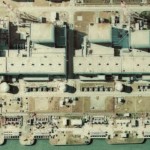Radiation levels in Japan fluctuating as nuclear crisis worsens
Radiation levels in Japan have been unstable and have hit levels dangerous to human health several times as nuclear power plant technicians scramble to prevent a meltdown of the Fukushima Da-Ichi plant.
Authorities have dispatched additional workers to help the 50 technicians cool down the exposed fuel rods. They are attempting to restart the failed cooling systems damaged by the quake. Workers have also resorted to unconventional methods of cooling the reactor like using seawater from helicopters and water cannons.
The Tokyo Electric Power Co. said radiation levels have fluctuated, rising after successive explosions but stabilizing soon after. But many in Japan, especially foreigners, are getting more concerned of the situation. Many are flocking airports to leave Japan despite assurances from the government that radiation levels in Japan are under control.
Travel alerts have been issued by the United States, France, Australia, Germany and the U.K. urging their citizens to leave the disaster-hit country.
The number 4 reactor in Fukushima Dai-Ichi power plant is running out of water according to the Nuclear and Industrial Safety Agency of Japan. That will expose spent fuel rods and trigger the escape of radiation into the environment. Three out six reactors of the nuclear power plant have been damaged by blasts following the powerful magnitude 9.0 quake and tsunami.
The augmented workforce in the plant signals that radiation levels are getting higher and that more workers must rotate to minimize exposure. An emergency meeting is to be held by the United Nations nuclear agency today to discuss the worsening radiation levels in Japan.
